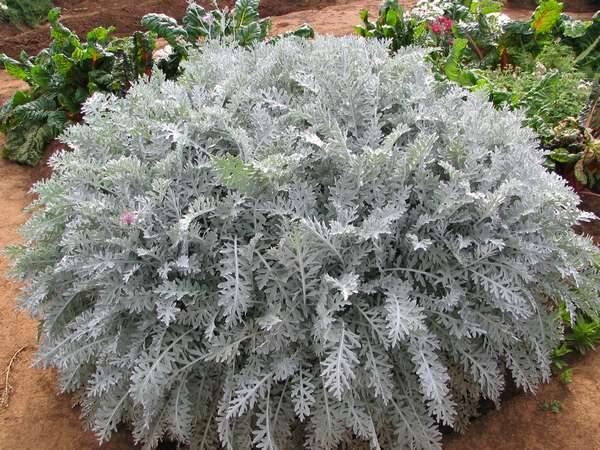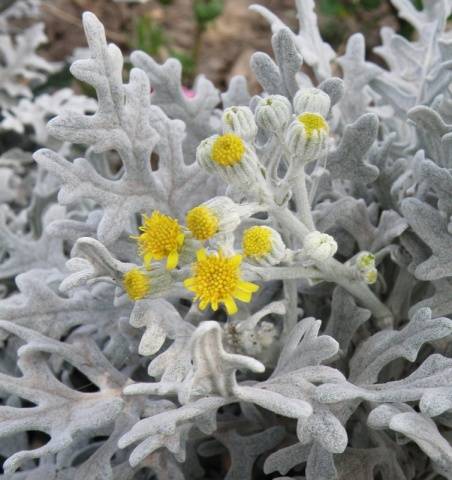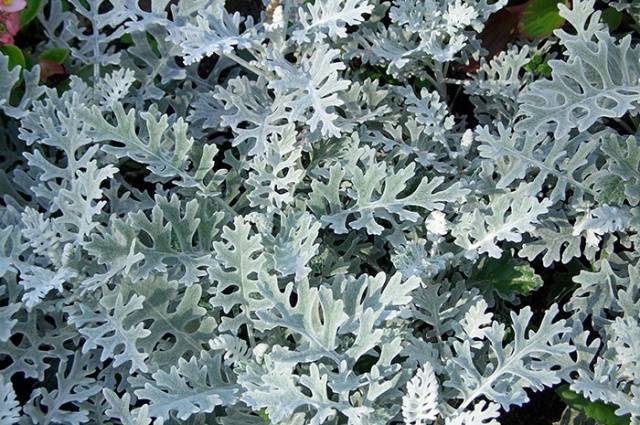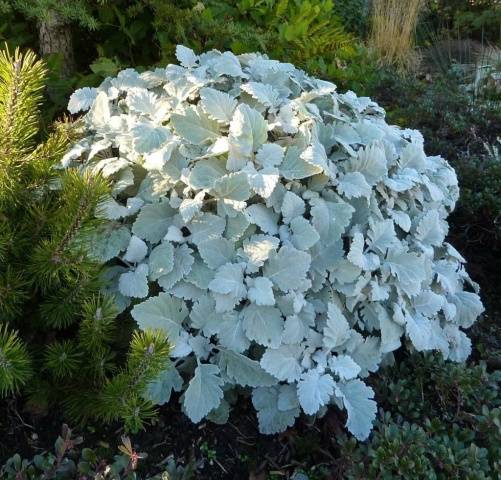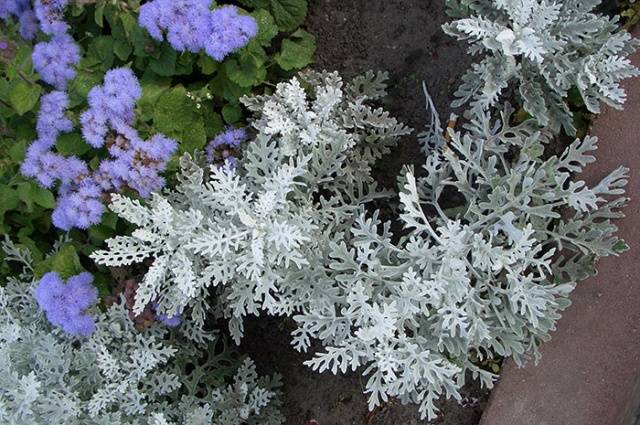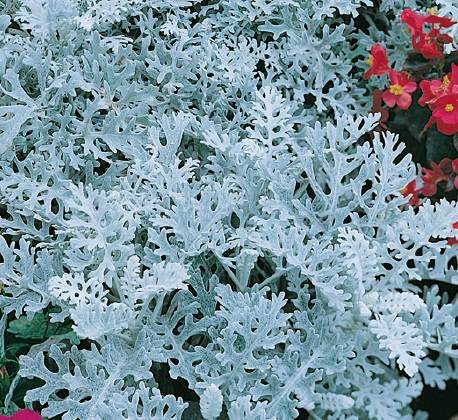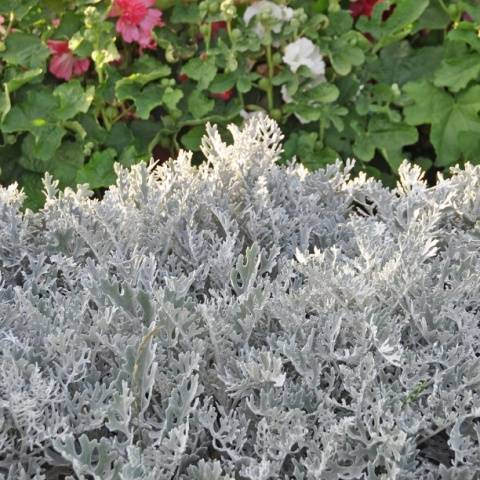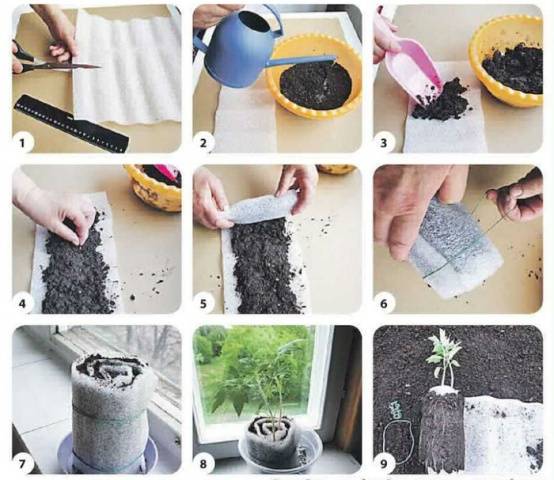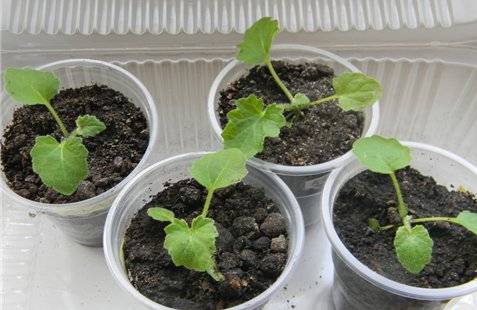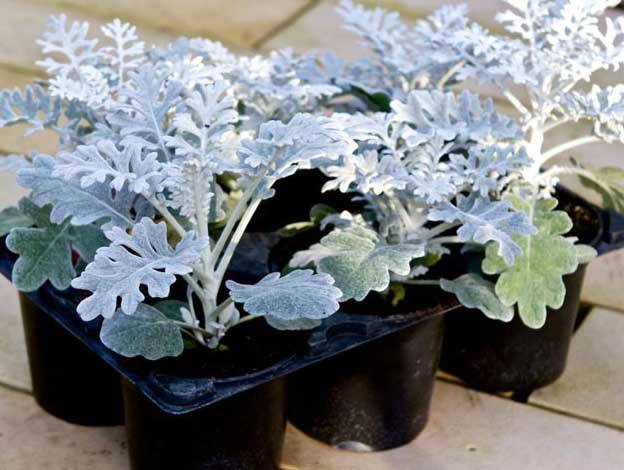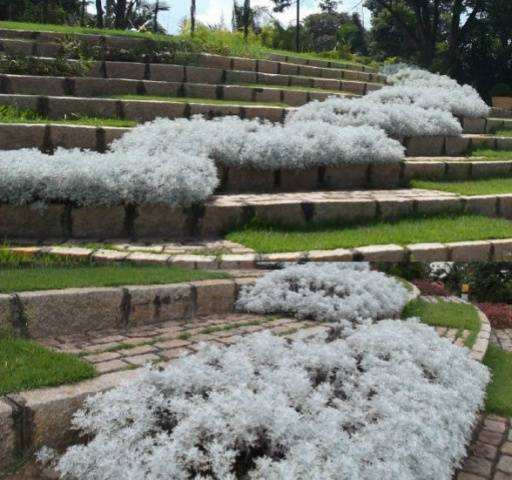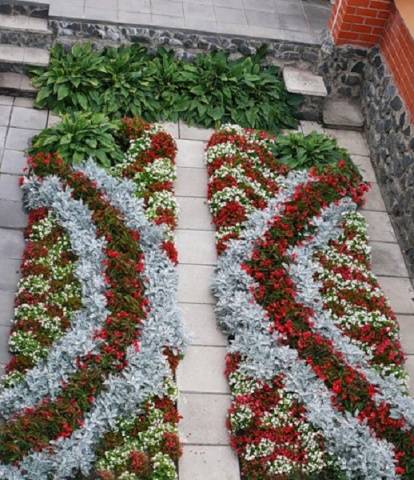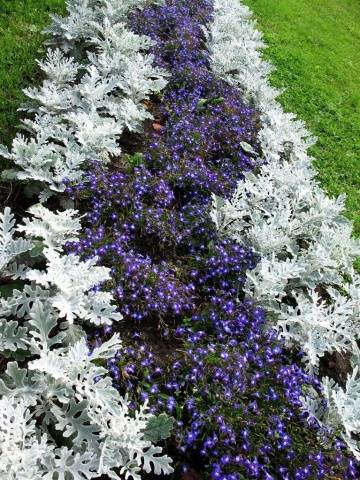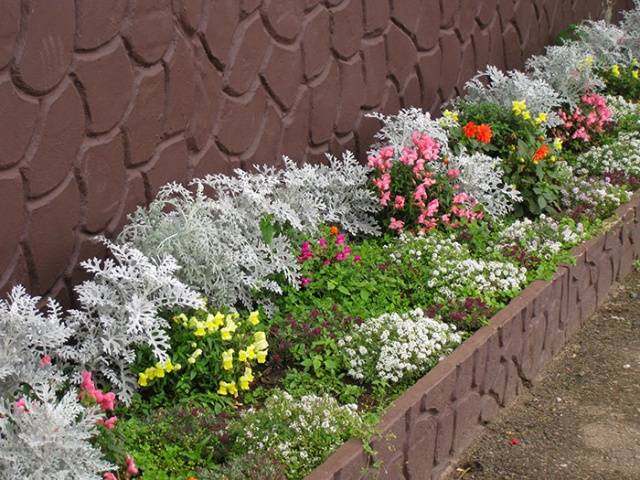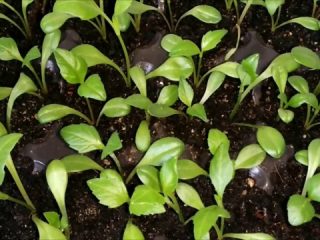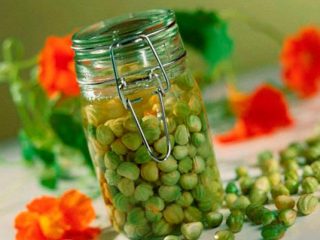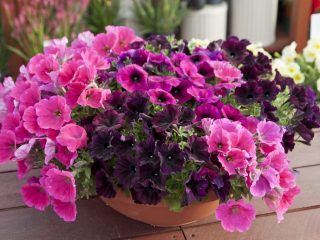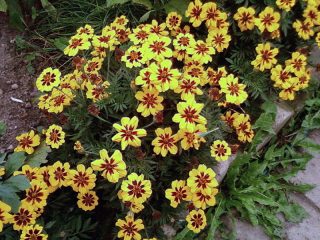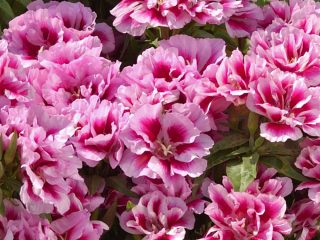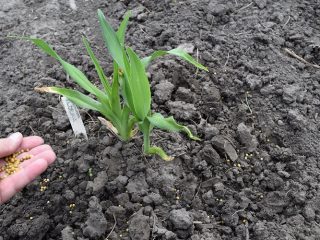Content
Cineraria is a plant from the Asteraceae or Compositae family. There are more than 50 species in nature. The exotic plant attracts attention, so many gardeners grow it in their gardens to improve the design.
Cineraria can be used both for independent plantings and for creating background compositions, decorating borders and rock gardens. How to sow Cineraria for seedlings and the features of care will be discussed in the article.
Description
Landscape designers and flower growers who create interesting compositions in their gardens on their own are always attracted to interesting plants. One of them is Cineraria silver. The plant is native to some regions of the African continent and the island of Madagascar. Raspberry (also called Cineraria) grows in a perennial form and is an evergreen plant.
Bushes
In floriculture, cultivated varieties are used, created by breeders based on wild relatives. Cineraria silver is represented by a semi-spreading shrub or semi-shrub of herbaceous type up to 30 centimeters high.
Leaves
The leaves collected in a dense rosette are especially attractive. The feathery, heavily dissected leaves have a velvety, pleasant-to-touch surface with clearly visible hair. If you look from afar, it seems that silver lace has been thrown over the flowerbeds, or frost has fallen on the leaves. Leaf blades are located on stable petioles.
The color features are already clear from the name, although there are varieties of cineraria in which greenish specks are visible on the leaves.
There are perennial and annual varieties, but in Russia it is impossible to grow them outside, since their relatives are tropical plants.
Flowers
In indoor floriculture, perennials are grown that decorate window sills with their unusual leaves. At home, you can use various varieties of cineraria, including beautifully flowering ones. In open ground, flowering is rare; the inflorescences themselves do not attract attention. After all, the flowers are simple, small, yellow, inconspicuous, this is clearly visible in the photo. Most often, the flower stalks are cut off so that they do not spoil the design, because it is the openwork, silvery leaves that are the main advantage of cineraria.
Application
Silver cineraria, seaside cineraria, ragwort, ashberry - these are all names of the same exotic plant with attractive leaves.
The main purpose of the flower is to decorate flower beds, rockeries, and alpine slides. The leaves retain their shape and color well when dried, so they are used as dried flowers.
But not only landscape designers are attracted to Cineraria.This plant is widely used in folk medicine to treat intestines and bronchial asthma.
Varieties of Cineraria
A trip to a flower shop will allow you to appreciate the range of Cineraria varieties: there are a large number of them for every taste. For the first time, you can sow purchased seeds, and then collect them yourself, leaving a few baskets on the plants.
And now about the most popular Cineraria varieties:
Silver dust
This variety is characterized by fast growth. The bushes are compact, low, only 15 or 25 centimeters. The leaves are carved, openwork, grayish-white in color with slight pubescence. Some seed producers call this variety under the name Silver Dust.
Tsirras
A tall plant with silver-green serrated leaves. The plates are round, not dissected, but solid, unlike other varieties of Cineraria. When growing seedlings, novice gardeners may be confused by the color of the plates, since at first it is the green color that dominates in them. But as they grow, the leaves become silver.
Andromeda
Perhaps the shortest plant among the seaside Cineraria: during the growing season it grows only 15 cm. The leaves are pinnate, strongly divided. The lower part is pubescent, tomentose, silvery in color. Flowering begins in August, but the flower stalks are so inconspicuous that it is better to remove them.
Candicans
The variety attracts with its bluish-silver, pinnately dissected leaves. Plant height is no higher than 35 cm.
Diamond powder
Low Cineraria, its height is slightly more than 20 cm. The color of the carved flower plates is silvery-ashy.
Growing seedlings
As we have already noted, new Cineraria seedlings are obtained at home by growing seedlings from seeds. This operation, as a rule, does not cause any particular difficulties and is quite accessible to beginning flower growers. Plants grow on any soil, but reveal all their beauty in light, breathable compounds. This is the soil that is prepared for growing seedlings. To improve the structure of the earth, sand must be added.
Sowing time
There is no clear answer to the question of when to plant seeds for seedlings. The choice of date will depend on climatic conditions, the characteristics of spring itself and the selected varieties of Cineraria. Approximately, seeds are sown for seedlings in February, March, April, and in the southern regions, where the warm season lasts a long time, even in May.
Sowing methods
Cineraria is not just an exotic plant; various methods can be used for its seed propagation:
- The soil in the container is moistened and compacted a little. Seeds are scattered on this surface without embedding them in the soil. You just need to lightly tap the seeds so that they “catch” onto the soil.
- Sow the seeds in a nursery on moist soil, sprinkle sand on top.
- Sow Cineraria on the ground, cover with thin paper, such as a napkin. Hatched plants will be able to get through it.
From time to time the shelter is raised to ventilate the plantings. Water carefully as necessary so as not to wash or deepen the seeds. This procedure can be simplified if drainage is placed at the bottom of the container with holes. Then the container is simply lowered into a stand with water to moisten the soil.The containers are placed in a warm, illuminated place.
Although the process of growing Cineraria seedlings is simple, the video will be useful for novice gardeners:
Today, many flower growers and gardeners grow seedlings in a snail and are interested in whether this method is suitable for Cineraria. This should be an individual decision, because many annual flowers are quite successfully obtained from seeds in this way.
The convenience of the snail in obtaining a large number of sprouts with minimal space consumption. In addition, when picking seedlings, the root system is less damaged.
Seedling care
As a rule, the maximum germination period for Cineraria silver seeds is two weeks. But germination can occur earlier if the seed is fresh. When half of the sprouts appear, the covering material is removed and Cineraria is provided with good lighting.
Sometimes seedlings grow poorly, in which case it is necessary to feed them with flower fertilizers. It is used strictly according to the instructions. Shallow loosening of the soil, which increases air access to the root system, also helps to speed up growth.
Plants should be watered sparingly and only with warm water. Like all Asteraceae, Cineraria does not tolerate too wet soil.
Transfer
Picking is carried out at the stage of appearance of the silver leaf. Seedlings can be transplanted not only into plastic cups, but also into so-called diapers. This is essentially a pot made from a piece of cellophane. It is convenient to plant seedlings from them in a permanent place: the roots are not damaged.
For diving, take the same fertile soil as when sowing seeds, which is well moistened. Plants in the nursery also need to be watered to make it easier to select them.Long roots are trimmed a little with scissors and placed in the hole.
After replanting, the soil is compressed to ensure better adhesion to the soil and to expel air from under the roots. Light watering is required. If there are a lot of seedlings, some of them can be transplanted again into a container at some distance.
Rules for picking godson:
Caring for plants in the ground
It is necessary to plant Cineraria silver in open ground after positive temperatures have been established. The fact is that young seedlings are afraid of frosts, although in the fall adult plants survive them well and do not lose their decorative properties.
The survival rate of plants is high, and there is practically no waste. It is better to grow Cineraria in an open, sunny place, although light shade is not a barrier.
The bushes need to be planted in fertile soil at a distance of 20-25 cm so that they do not interfere with each other during growth. Subsequently, the silvery flowers form a continuous line.
Plant care is not burdensome:
- watering as needed;
- weeding and loosening the soil;
- mulching with fresh mown grass or rotted sawdust;
- fertilizing with mineral or organic fertilizers every week (fertilizers with a high nitrogen content are not recommended);
- pruning seedlings is an important procedure that allows Cineraria to become more decorative;
- Removing flower stalks is a necessary measure; it will help avoid drying out of the lower tier of leaves.
As for diseases, fortunately, the plant rarely gets sick, and harmful insects do not like it.It is Cineraria’s high immunity and its decorative qualities that attract landscape designers.
Instead of a conclusion
If you liked the description and photo of the decorative representative of the Astrovs, but you are afraid that there will be nowhere to plant seedlings, we will make you happy. This is the plant for which you can always find a place. After all, Cineraria can be grown not only in flower beds, but also in pots, between decorative coniferous trees, in hanging flower pots and even on the balcony - it will be appropriate everywhere.
There are a huge number of options for using plants in landscape design, we will present some of them. And all you have to do is fantasize.
If you love water, but there is no way to build some kind of pond on your site, make it from openwork Cineraria, as in the photo below. Look, there it is, a stream running down the steps of the stairs.
The ragwort gets along well with various garden plants, which allows you to create real flower patterns.
Cineraria is an excellent option for decorating flower beds. It is most often used for edging borders in flower beds and discounts.
Growing Cineraria as a potted crop has its advantages. With the onset of cold weather, you can move them indoors and continue to enjoy openwork plants in winter.
